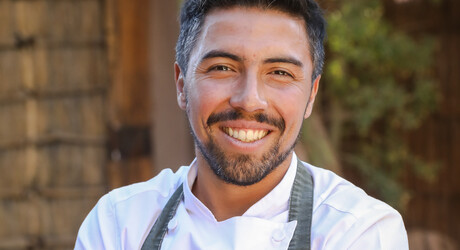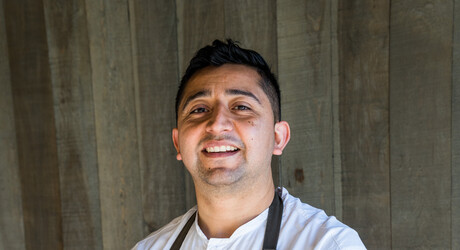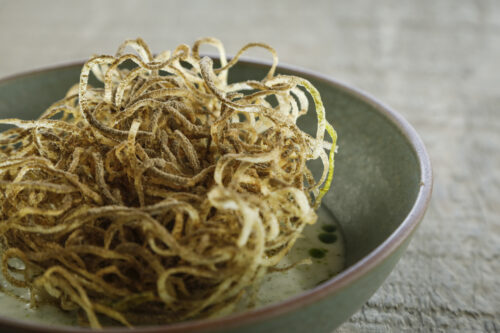“A recipe has no soul. You, as the cook, must bring soul to the recipe” – Chef Thomas Keller.
Our three lodges, Awasi Atacama, Patagonia and Iguazu, are are all part of Relais & Chateaux. This collection of some of the world’s finest hotels focusses as much on gastronomy as it does on lodging and service.
So let’s have a closer look at two of our chefs: located at different corners of South America, Chile’s Atacama Desert and Argentina’s Iguazu Falls.
Awasi Atacama – Juan Pablo Mardones

“Our goal at Awasi is not to make you feel at home but to the contrary; we would like for you to feel as though you are visiting your close friends’ home, which will let you experience the local culture. Our kitchen will always be flexible. In Atacama our cuisine tries to use the best ingredients we can get here in the desert using them in tasty and healthy presentations, that way we can put a little bit of the dessert at every meal.”
While the Atacama Desert seems an unlikely to be a source of biodiversity and inspiring new recipes, Awasi Atacama’s chef Juan Pablo Mardones has found it to be exactly that. Since the hotel opened, he has invested considerable time in studying and searching out local ingredients.

A fresh quinoa salad at Awasi Atacama made using ethically-sourced seasonal ingredients
Some, like quinoa and papa morada – a gourmet variety of blue-violet potato – are widely known.
But many are native to the region and only grow wild; these include edible algarrobo pods from the carob tree, rosa de año – a flower that blossoms in the desert after the annual rainy season, and one of the chef’s staples: the sweet fruit of the Chilean chañar tree.
The chañar is a small, thorny tree that grows exclusively in very dry areas, pervading local culture and folklore as a result of its medicinal properties. The chef, however, uses its principally to delight his guests’ taste buds, deriving an intense syrup, with woody tones, from the tree.
This serves as a versatile aromatic base, known as “Arrope de chañar”, which features strongly in Awasi Atacama’s sweet dishes.

Awasi Atacama – Relais & Chateaux
Moreover, preserving the three corners of South America where the Awasi lodges are located is of utmost importance to Awasi. We protect and conserve over 340 hectares (840 acres) of virgin forest and native woodland in Iguazu and Patagonia.
These forest areas absorb over 10,000 tonnes of carbon dioxide per year – a total that is greater than the amount of emissions generated by the three lodges, as well as the airline and transfer travel undertaken by employees and guests. This means Awasi is officially carbon neutral.
“If more of us valued food and cheer and song above hoarded gold, it would be a merrier world.” – J.R.R. Tolkien
Awasi Patagonia – Fabrizio Aciares

“I grew up on Chile’s central shore near Valparaíso, an area that is also known as the “Coast of Poets” because renowned writers had residences nearby. My childhood was spent by the sea, watching my grandmother cook in a beachside restaurant, surrounded by the aromas of salt, fresh conger and abalone. Working in remote locations, I particularly enjoy working with local produce and making home-made pasta, but I have a soft spot for seafood from my upbringing and also because it is so deeply ingrained in Chile’s gastronomic identity.”
Awasi Patagonia was conceived not to compete with, or compromise, its spectacular surroundings – both in construction and operation.
- Using local ingredients is part of our DNA in our restaurants
Photographs of some dishes at Awasi Patagonia taken by Luciano Bacchi
The independent villas and main lodge at Awasi Patagonia were all designed to blend seamlessly with, and preserve, the unspoiled landscape.
Construction was carried out off-site as far as possible and project managed to keep on-site works to a minimum.
Minimizing environmental impact was vital too, with villas constructed on stilts to leave plants and micro-fauna undisturbed, and the use of local hardwood and natural ventilation.

All the 14 villas at Awasi Patagonia have views of the iconic “towers” of Torres del Paine mountain range
The presence of the lodge helps protect against poachers and challenge the perspectives of farmers who may see wildlife as a nuisance.
As a result, the area’s unique ecosystem – which includes guanacos, condors, and pumas – is thriving on the reserve.

Photographs of pumas close to Awasi Patagonia taken by Matias de Cristobal
It’s a result that has led to wider initiatives such as strategically placed cameras that document wildlife behavior, the founding of South America’s first Puma Foundation in 2017, and the protection of a further 240ha at the lodge’s sister site Awasi Iguazú.





